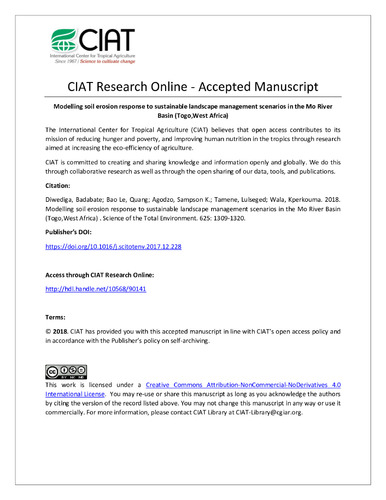Modelling soil erosion response to sustainable landscape management scenarios in the Mo River Basin (Togo, West Africa)
The rural landscapes in Central Togo are experiencing severe land degradation, including soil erosion. However, spatially distributed information has scarcely been produced to identify the effects of landscape pattern dynamics on ecosystem services, especially the soil erosion control. In addition, relevant information for sustainable land and soil conservation is still lacking at watershed level. On this basis, using the LAndscape Management and Planning Tool for the Mo River basin (LAMPT_Mo), we (1) modelled soil erosion patterns in relation with land use/cover change (LUCC), land protection regime, and landforms, and (2) examined the efficiency of landscape redesign options on soil erosion amounts at basin scale. We found that Simulated historical net soil loss (NSL) for the Mo basin were approximately 26, 23, 27, and 44 t/ha/yr, for 1972, 1987, 2000, and 2014, respectively. These simulated NSLs were higher than the tolerable soil loss limits for the Tropics. Steep slopes (≥ 15°), poorly covered lands (croplands and savannas), and riversides (distances ≤ 100 m) are critical areas of sediment sources. The local appraisal of soil loss was in line with the simulated outputs even though quantification was not accounted for when dealing with rural illiterate people. Furthermore, results showed that the examined management measures, such as controlling the identified erosion hotspots through land protective measures, could help reduce the NSL up to 70%, to values closer to the tolerable limits for the Tropics. The model implementation in the basin showed insights for identifying erosion hotspots and targeting soil conservation planning and landscape restoration measures.

